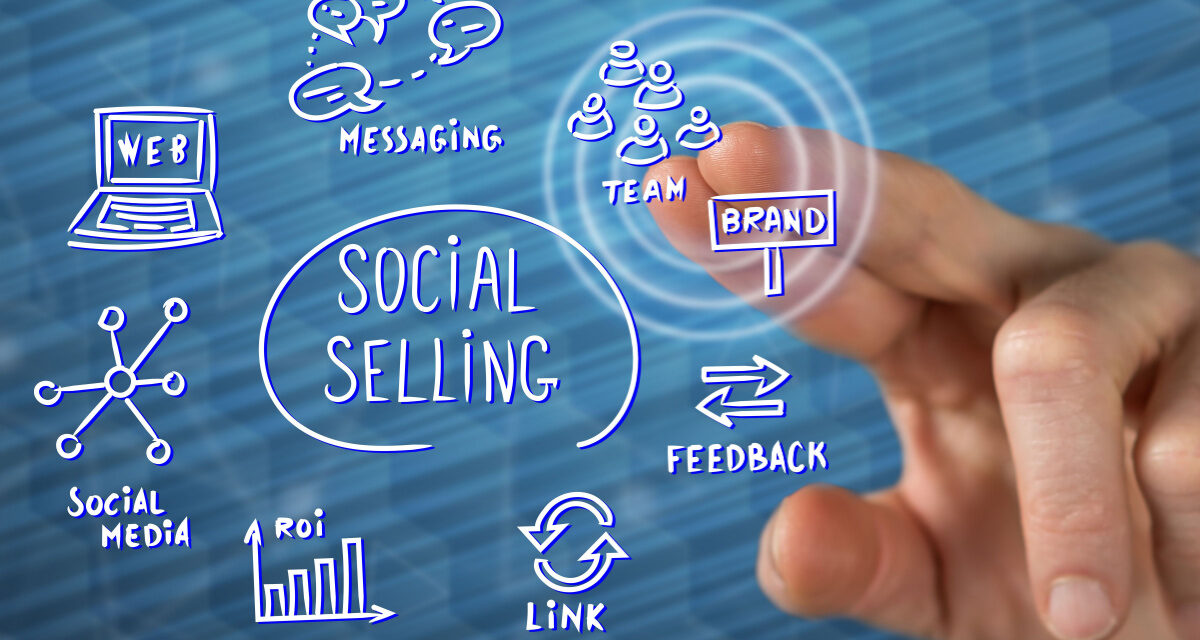Introduction: Embracing the Digital Shift in Sales
In the American dream’s entrepreneurial spirit, small business owners recognize that the sales landscape is dramatically shifting. Gone are the days of cold calls and impersonal email blasts. Today, the digital transformation in sales is not just a trend; it’s a survival strategy, especially in the B2B realm. This shift has given birth to “social selling,” a powerful approach that leverages social media platforms to identify, engage, and nurture prospects. As we navigate this digital era, understanding and implementing social selling becomes crucial for small businesses aiming to stay ahead of the curve.
The Game-Changer: Why Social Selling is Vital for B2B Success
Traditional sales tactics are becoming increasingly ineffective, particularly in the B2B sector, where purchases are considered, and relationships are king. Social selling bridges this gap, offering a more personal, direct, and interactive way to connect with decision-makers. According to LinkedIn, 78% of social sellers outsell peers who don’t use social media. This statistic isn’t surprising, as this strategy fosters trust by engaging prospects on platforms they frequent, providing valuable insights, and building genuine relationships—long before the sales pitch.
Blueprint for Success: Crafting Your Social Selling Strategy
Achieving success in selling socially doesn’t happen by accident; it requires a strategic approach:
- Perfecting Your Online Persona: Your profile is your first impression. Ensure it reflects professionalism, passion, and expertise that resonates with your B2B clients.
- Content is King: Share insights, trends, and valuable content that positions you as a thought leader, rather than just a seller.
- The Art of Social Listening: Use social platforms to understand your prospects’ pain points and market needs, shaping your solutions accordingly.
- Engagement That Converts: Genuine interaction, whether through comments, direct messages, or shared posts, can turn cold leads into warm connections.
Leveraging Tools: A Technological Arsenal for Selling Socially
While LinkedIn reigns supreme in B2B social selling, platforms like Twitter and industry-specific forums are goldmines for insights and connections. Additionally, modern CRM systems integrate social media data, while analytics tools offer a deep dive into engagement metrics, helping tailor strategies for better results.
From Theory to Practice: Implementing Your Selling Model
Transitioning to a social selling approach is a journey. Set clear KPIs to measure success, train your team to navigate the social landscape professionally, and maintain a dynamic content calendar that reflects your market’s pulse. Remember, consistency and adaptation are key, as you’ll need to continuously refine your strategies based on analytical insights.
Navigating Roadblocks: Overcoming Social Selling Challenges
Despite its effectiveness, social selling isn’t without hurdles: maintaining consistent engagement, data overload, and measuring ROI are common challenges. However, with a proactive stance, including utilizing CRM tools effectively, seeking quality over quantity in interactions, and setting realistic, measurable goals, these obstacles become manageable.
Ahead of the Curve: The Future of Selling in B2B
As technology evolves, so does social selling. The future will likely see an increased reliance on artificial intelligence to identify leads and personalize content, while machine learning could help predict market trends. For small businesses, staying updated with these advancements isn’t just beneficial; it’s essential for sustained growth.
Conclusion: Seizing the Social Selling Advantage
In conclusion, social selling is transforming the way small businesses engage with prospects, breaking barriers that traditional methods can’t. By building authentic relationships, providing value through content, and leveraging the latest tools, B2B companies can unlock unprecedented growth and connectivity. As the digital landscape continues to evolve, social selling isn’t just a strategy; it’s the new norm.
Embrace this change, engage with your audience on a deeper level, and watch as the boundaries between customer and brand ambassador blur, heralding a new era of sales and success.





